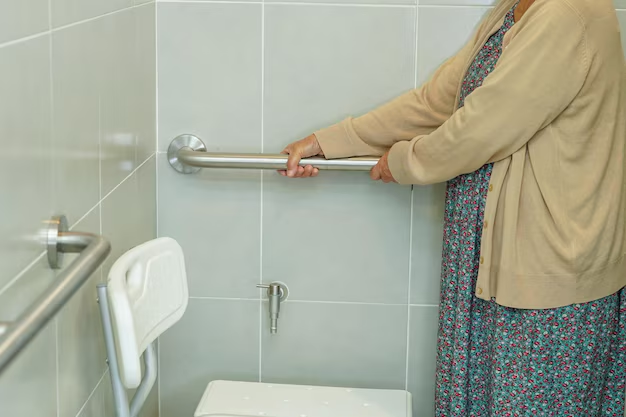Understanding the Urge: What Causes Urge Incontinence and How to Navigate It
Imagine you’re in a meeting, out for a walk, or simply enjoying dinner with friends, and suddenly, you feel an overwhelming need to urinate—one so strong that it leaves little time to reach a restroom. This scenario is all too familiar for millions living with urge incontinence, a common form of urinary incontinence. Explore the causes, interrelated factors, and insights on managing this condition with our guide designed to inform and empower.
What Is Urge Incontinence?
Urge incontinence, also known as overactive bladder (OAB), is characterized by a sudden, intense urge to urinate followed by involuntary leakage. This can occur regardless of how much urine is in your bladder and can be both distressing and disruptive.
Distinguishing It from Other Forms
To better understand urge incontinence, it's essential to differentiate it from other types of incontinence:
- Stress Incontinence: Leakage occurs during physical activity that puts pressure on the bladder, like coughing or exercising.
- Overflow Incontinence: A continuous dribble from the bladder, signifying it doesn’t empty completely.
- Mixed Incontinence: A combination of urge and stress incontinence symptoms.
The Underlying Causes of Urge Incontinence
Several factors contribute to the onset of urge incontinence. Understanding these can aid in seeking effective management strategies. Let's examine the primary contributors:
Bladder Muscle Overactivity
Our bladders rely on a harmonious cooperation between the muscles and the nervous system. In cases of urge incontinence, the detrusor muscle, responsible for controlling urine release, experiences involuntary contractions. This miscommunication manifests as the uncontrollable urgency to urinate.
Neurological Disorders
Conditions affecting the brain or spinal cord can disrupt the signals controlling the bladder. Some examples include:
- Multiple Sclerosis (MS)
- Parkinson’s Disease
- Stroke These disorders can damage the nerves that send messages between the brain and the bladder, leading to bladder overactivity.
Urinary Tract Infections (UTIs)
A common yet potent catalyst of urinary urgency, UTIs cause irritation and inflammation in the urinary tract, triggering the bladder’s immediate urge to empty itself.
Lifestyle and Dietary Components
Certain lifestyle choices and dietary habits can exacerbate symptoms of urge incontinence. Key contributors include:
- Caffeine and Alcohol: Both are diuretics that stimulate increased urine production, intensifying symptoms.
- Spicy Foods: Can irritate the bladder lining, accentuating urgency.
- Inadequate Fluid Intake: Paradoxically, not drinking enough can similarly irritate the bladder.
Age and Hormonal Changes
As we age, the bladder muscles weaken naturally, heightening the likelihood of urge incontinence. Additionally, hormonal shifts, particularly in women post-menopause, can lead to bladder changes that exacerbate urgency.
Navigating Life with Urge Incontinence
Understanding the cause is just one side of the coin; living successfully with urge incontinence involves a proactive approach to management.
Practical Lifestyle Adjustments
Implementing small, consistent lifestyle changes can yield significant improvements:
- Bladder Training: Gradually increasing the time between urination can bolster bladder control.
- Timed Voiding: Regular bathroom schedules help manage bladder activity.
- Pelvic Floor Exercises: Strengthening pelvic floor muscles can support bladder control.
Dietary Modifications
Revise eating and drinking habits to ease symptoms:
- Limit Diary Offenders: Reduce toilets’ worst enemies—caffeinated drinks, spicy meals, and alcohol.
- Hydrate Smartly: Drink adequate water throughout the day to maintain bladder health without overwhelming it in one go.
Medical Interventions and Resources
Various resources and interventions can provide further support:
- Medications: Certain drugs help relax the bladder or diminish its contractions.
- Physical Therapy: Tailored exercises can aid in strengthening the muscles involved in bladder control.
- Support Groups: Engage with communities for shared experiences and strategies.
Making Informed Choices
Empowerment comes from informed action. While medical advice and treatment should always be sought with healthcare professionals, understanding and exploring lifestyle adaptations offer immediate agency in managing urge incontinence.
Effective Communication with Healthcare Providers
Open, honest dialogues with healthcare professionals are pivotal. Being descriptive about symptoms and their impact enables tailored treatment plans. Keep a symptom journal to track patterns, offering valuable insights during consultations.
Leverage Technology
The digital age offers various tools and resources, such as apps for symptom tracking or bladder training, enhancing self-management and communication with health practitioners.
Embracing Supported Living
Urge incontinence doesn't have to dictate the boundaries of one's life. While it presents unique challenges, understanding its roots informs adaptive strategies for maintaining vibrant, active lifestyles.
Building a Support Network
Partnering with family, friends, and online communities can support emotional well-being and encourage adherence to self-management practices. Sharing experiences fosters resilience and paves the way for collective understanding.
Explore Accommodating Products
Today's market offers inventive aids like absorbent underwear and bed pads, designed to discreetly address incontinence needs while providing peace of mind during daily activities and restful sleep.
Final Insights
Understanding urge incontinence is a step toward harnessing the tools and resources to manage it effectively. By demystifying its causes and exploring diverse management strategies, one can reclaim control and confidence in daily life.
🎯 Your Quick Reference on Urge Incontinence
- Understanding Symptoms: Recognize the sudden, intense urge to urinate as a key feature.
- Uncovering Causes: From overactive bladder muscles to lifestyle choices—identify significant contributors.
- Lifestyle Changes: Consider pelvic exercises, dietary adjustments, and bladder training for relief.
- Seek Support: Utilize medical resources and support networks to enhance daily living.
- Stay Informed: Track symptoms and maintain open communication with healthcare professionals.
🛠️ Empower Your Path Forward: With understanding and approach, living proactively alongside urge incontinence is within reach.

Related Articles
- Are Incontinence Supplies Tax Deductible
- Can a Bladder Infection Cause Urinary Incontinence
- Can a Kidney Stone Cause Incontinence
- Can a Urinary Tract Infection Cause Incontinence
- Can a Uti Cause Incontinence
- Can Constipation Cause Incontinence
- Can Dairy Cause Incontinence
- Can Hemorrhoids Cause Bowel Incontinence
- Can Hemorrhoids Cause Incontinence
- Can Incontinence Be Cured